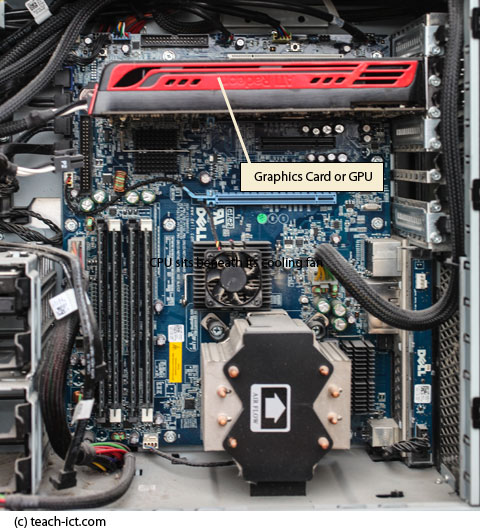3. Install Graphics card
A computer will have a basic graphics chip installed on its motherboard and this is fine for every-day use. But 3D graphics, as found in video games require a lot of processing power.
For this reason, a specialist graphics card can be installed. The graphics card contains a 'Graphics Processing Unit' or GPU which is designed to handle graphics and video much faster than the CPU itself.
If an application is making intense use of graphics or video then installing a GPU will improve performance considerably. The CPU will send any graphics related tasks directly to the GPU while it continues to process other tasks.
The photo below shows a typical graphics card installed in a desktop computer

Many graphics tasks can be run in parallel. For example setting the colour of independent pixels on a screen. To take advantage of this, the GPU can issue a single instruction and act on many pixels at the same time. This is an example of 'Single Instruction Multiple Data' processing.
Although installing a graphics card will lead to improvements in computer performance there are some issues that need to be considered:
- Graphics cards can be expensive.
- Graphics cards do not improve CPU performance on all tasks, only ones related to graphics and video.
- Graphics cards use a lot of power and this might mean that the computer also needs to be fitted with a more powerful power supply. The larger power supply will add further cost.
- Because graphics cards use a lot of power they need a cooling fan. The cooling fans are noisy so they make the computer sound louder than they were before the graphics card was installed.
Challenge see if you can find out one extra fact on this topic that we haven't already told you Click on this link: Fast graphics cards
